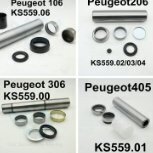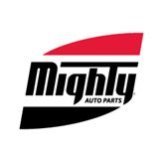-
Welcome to Auto Parts Forum
Whether you are a veteran automotive parts guru or just someone looking for some quick auto parts advice, register today and start a new topic in our forum. Registration is free and you can even sign up with social network platforms such as Facebook, X, and LinkedIn.
Wheel Bearings and Geometry
-
Similar Topics
-
By austinbearing
Hello, everyone.We are an auto bearing manufacturer from China.
We produce Peugeot, Renault, Fiat and some other aut bearings.
Contact me if you're interested.
WhatsApp: +8613775640157
E-mail: [email protected]
-
By Counterman
link hidden, please login to view NTN, the parent company of BCA Bearings, is proud to announce the launch of BCA’s 2024 Endless Summer promotion. During the promotion, BCA’s warehouse distributor customers can earn BCA-branded, premium merchandise with orders of BCA wheel hub assemblies, bearings and seals.
“We are thrilled to announce the BCA Endless Summer promotion” said Patrick Cronin, Marketing Manager, Automotive Aftermarket. “The Endless Summer theme evokes a relaxed and carefree feeling that we all strive to achieve; the same carefree feeling we want associated with using our premium parts. We are looking forward to summer and another great promotion.”
BCA’s Endless Summer promotion enables distributor customers to earn tiered packages of BCA branded merchandise with qualifying orders, which they can then use to conduct their own localized promotions. This allows the BCA-branded merchandise to reach every level of the distribution channel, from the parts professionals and service advisors who recommend BCA products to the technicians that install them.
The Endless Summer theme is meant to embody the warm summer feeling you wish would never end, and the promo items were selected to complement the theme and keep summer going long after Labor Day has come and gone. A floating stress relief keychain, waterproof phone pouch and backpack keep your valuables high and dry during a day at the beach. A misting water bottle and insulated picnic basket keep you and your snacks cool as the classic triangle kite drifts above in the summer breeze. Get out of the sun with the pop up shelter as you relax on the beach lounge pad, and then fire up the mini tabletop fire pit to roast marshmallows for smores. Now you’re living the Endless Summer with BCA.
BCA’s 2024 Endless Summer promotion runs from May 1 through June 30, 2024. For participation details, please contact a BCA Sales Representative or Customer Relations Advocate.
The post
link hidden, please login to view appeared first on link hidden, please login to view.
link hidden, please login to view -
By Dorman Products
Estimating repairs for “pretty little souped-up four-wheel drive” after vandalization
-
By Counterman
Alltech Automotive has added premium wheel hubs to its QualityPro brand of automotive products, providing full U.S. coverage for second- and third-generation hubs.
QualityPro premium wheel hubs feature a water-based, nontoxic e-coating treatment that enhances corrosion resistance, according to the company.
Lab tests prove that e-coating can prevent corrosion for more than 120 hours in salt-spray test environments, according to Alltech Automotive.
“Our premium wheel-hub expansion addresses ongoing demand in the marketplace for enhanced corrosion protection,” said Nancy Liu, chief executive officer/president at Alltech Automotive. “All mounting hardware and precise torque specs are included in every box for a complete, successful install.”
The post
link hidden, please login to view appeared first on link hidden, please login to view.
link hidden, please login to view -
By Mighty Auto Parts
The post
link hidden, please login to view appeared first on link hidden, please login to view. Four-Wheel and All-Wheel Drive vehicles have flooded the market. Look around your neighborhood, parking lots, daily traffic routes, etc. They come in the form of trucks and SUVs, many of which will never encounter off-road or inclement weather conditions that would require a four-wheel drive application. With these additional driveline components come some challenges for […]
The post
link hidden, please login to view appeared first on link hidden, please login to view.
link hidden, please login to view
-





Recommended Posts
Join the conversation
You can post now and register later. If you have an account, sign in now to post with your account.
Note: Your post will require moderator approval before it will be visible.